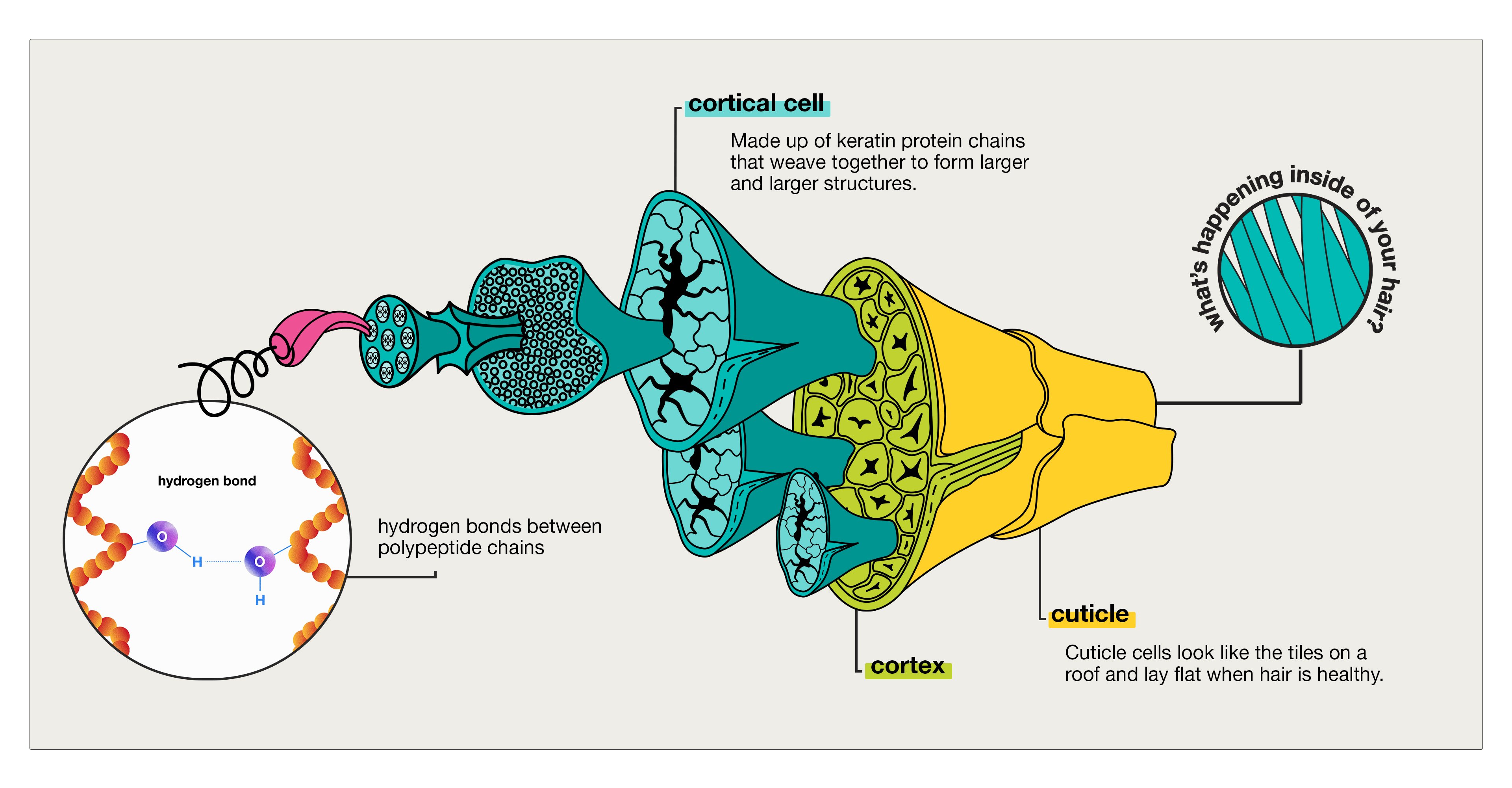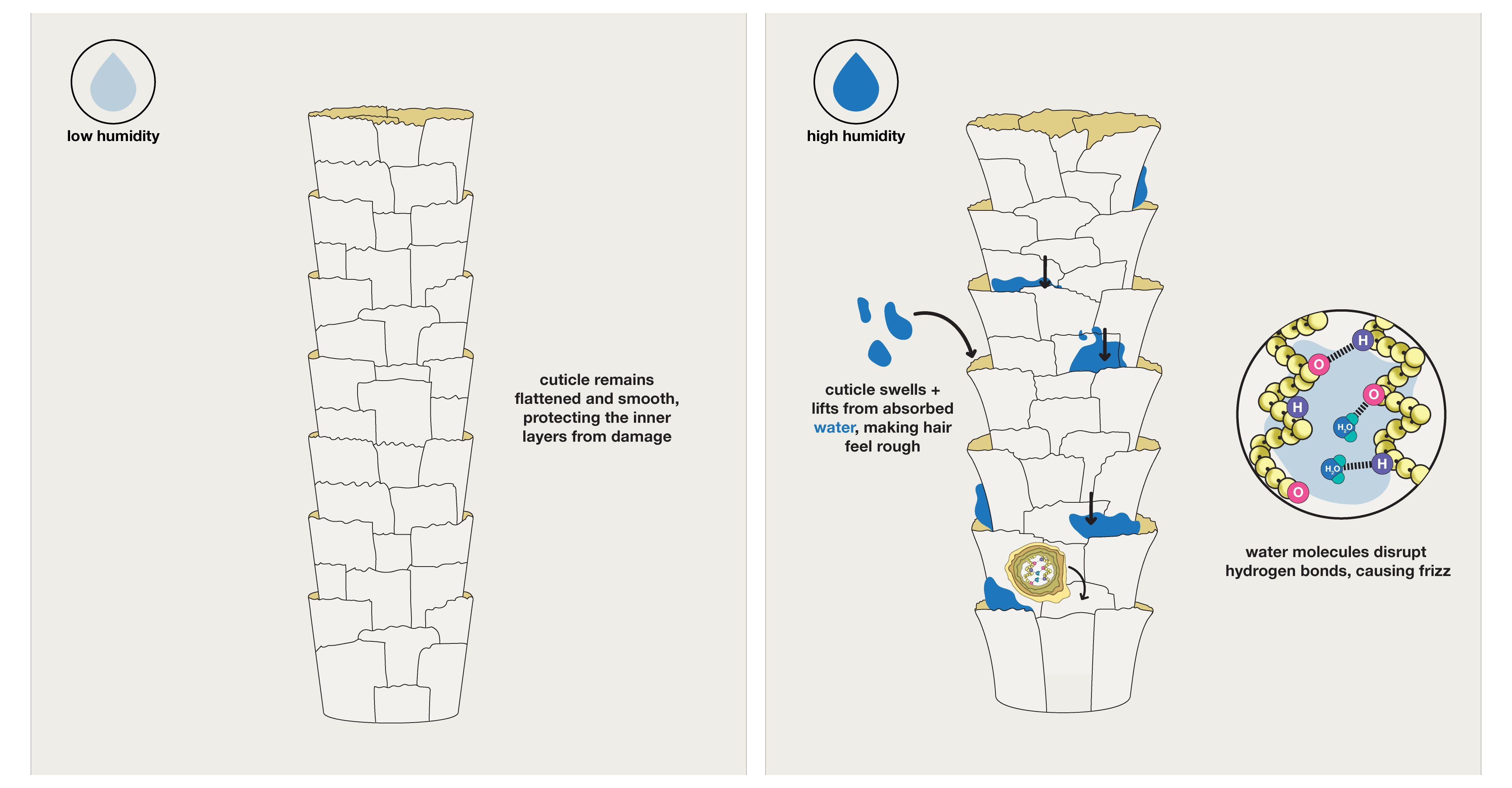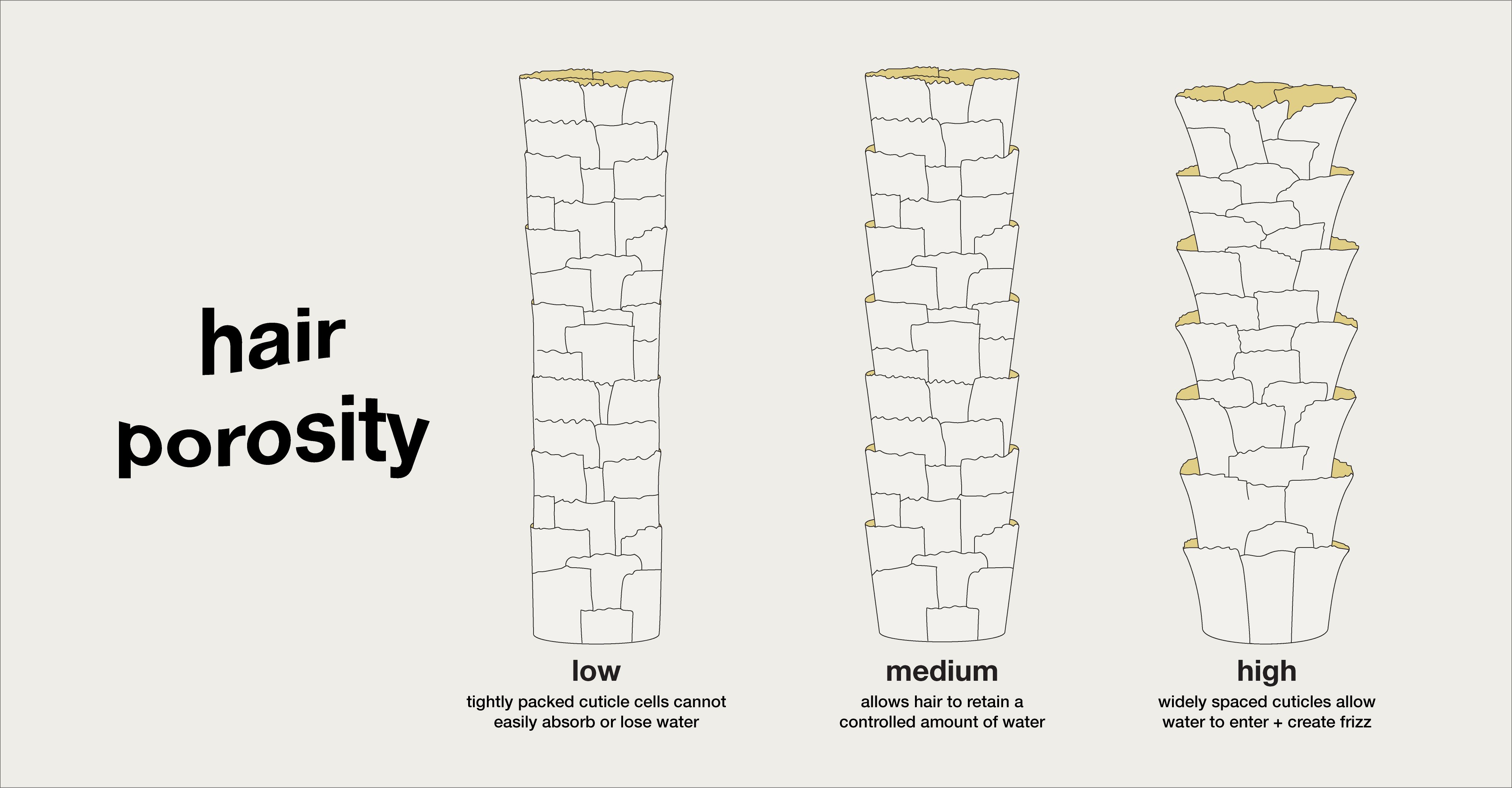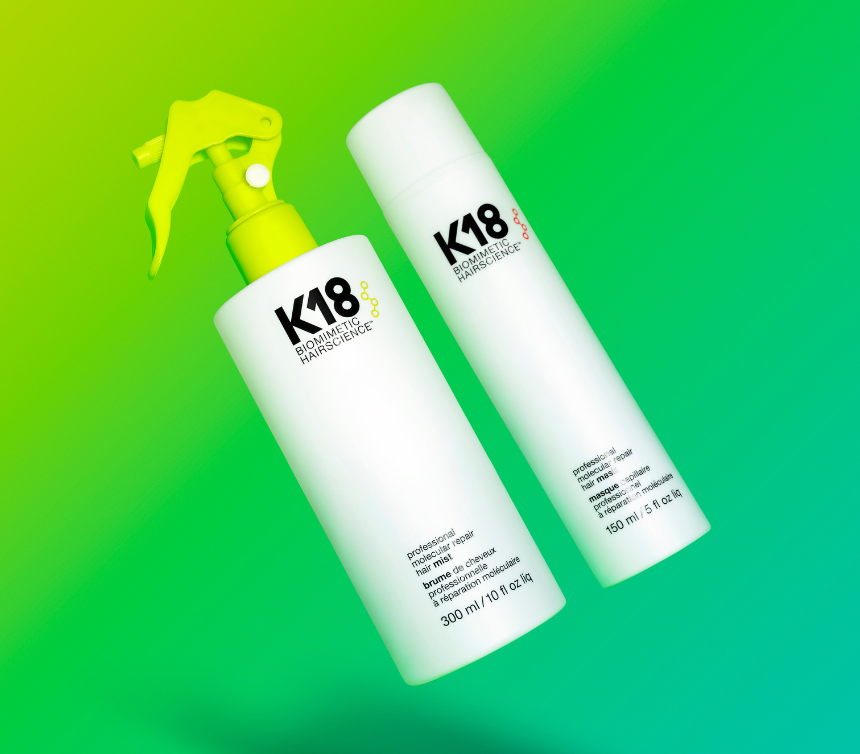The surprising science behind hair’s moisture content and how it impacts dryness, frizz + dullness from within.
Ever experienced “dry” hair? Dryness is a common concern in the haircare world, leading many to avoid products and ingredients that are thought to cause dryness or reach for those that claim to moisturize or hydrate hair.
But what does it really mean to “hydrate” hair? Let’s explore the science behind what hair hydration is, how to maintain the optimal amount of moisture for a healthy look and feel, and how damage affects hair’s moisture balance.
what hair hydration really means
Hydration is a popular topic in beauty. When it comes to skincare, hydration is all about maximizing and retaining a high water content. That’s why many of us use products like moisturizers and humectants designed to draw water into the skin and hold it there.
However, the opposite is true in haircare, where high water content is actually a sign of damage.
To explain why, we need to first revisit the structure of hair.

The hair is a multilayered structure composed of predominantly keratin proteins. These layers include the outer cuticle, the inner cortex, and, in thicker hair, the innermost medulla. Cuticle cells look a lot like the tiles on a roof and lay flat when hair is healthy. The cells of the cortex (cortical cells) are made up of keratin protein chains that weave together to form larger and larger structures.
When completely dry, hair is up to 95 percent protein, with the remaining weight being internal and external lipids, pigments, and some other minor components. A complex system of chemical bonds stabilizes the keratin protein chains in hair.
Individual links in hair’s keratin chains are joined by peptide bonds and cross-linked by disulfide bonds. Hydrogen bonds are a type of reversible chemical bond that occurs between keratin chains to maintain and hold a temporary shape. These hydrogen bonds are largely responsible for hair’s elasticity.
how water interacts with hair
In the hair science world, we think about the water content of hair being determined by the relative humidity of your environment, which is the amount of water vapor in the air. The water content of hair is dynamic and naturally fluctuates as the humidity of your environment changes—in scientific terms we call materials with this property “hygroscopic materials.”
As the water content of hair changes, so do its characteristics and properties.
When water enters hair, it makes hair’s structure more flexible and mobile, increasing the space between keratin proteins and causing both the cortex and cuticle to swell.

At low environmental humidity, the water content inside of hair is low, and hair has a smoother cuticle and higher elasticity but can also be less flexible making it more prone to breakage and split ends.
At high environmental humidity, hair loses elasticity and can become overly flexible and limp causing it to tangle and stretch when being combed or brushed which causes fatigue and damage. When water fills hair, it breaks the hydrogen bonds between keratin proteins, causing hair to appear frizzy, and lose its style.
The key to combating these changing conditions is maintaining balance. Healthy hair hydration is about maintaining an equilibrium between the inside and outside of hair, rather than simply adding water.
how porosity determines water content
A key factor that helps determine how hair’s moisture content changes with humidity is hair’s porosity. Porosity is used to describe the ability of hair to absorb and retain moisture.
The overall damage level of the cortex and the condition of cuticle cells on the surface of hair determine porosity. Hair with an undamaged cortex and tightly packed cuticle cells cannot easily absorb or lose water. Hair with more damage and a compromised cuticle is more porous, meaning water can more easily enter and exit the hair strand.

Damage from chemical services, excessive brushing and styling, heat tools, ultraviolet (UV) radiation, and environmental pollutants allow hair to absorb more water and cause cuticle cells to lift and separate, increasing hair’s porosity.
Hair’s affinity for water increases as disulfide bonds of the cortex break and the hair’s outermost water-repellant lipid layer is stripped away. The chemistry of the damaged cortex and swollen and widely spaced cuticle cells in damaged and highly porous hair let water enter hair with ease, making it easier for water to break the hydrogen bonds between your keratin chains, causing style to be lost and increasing frizz. Hair with high porosity is more prone to frizz from humidity because it takes on more water from the environment.
do conditioners really “moisturize” hair?
Those “moisturizing” ingredients in the haircare aisle are often surface treatments to minimize the appearance and feel of damage caused by high porosity or water retention.
Cosmetic ingredients like conditioning polymers and oils provide increased lubrication (aka slip) in the wet and dry to help detangle hair, decrease friction between strands, and prevent mechanical damage. While slip is important for reducing mechanical damage, these ingredients primarily work on the surface of hair and do not repair the damage caused to the structure of hair on the molecular level or significantly influence the water level in hair.
Ingredients that create slip can temporarily smooth hair texture and increase shine, and other properties linked to the feel and look, but they cannot repair the damage deep within hair that causes high porosity. To truly combat damage, holistic molecular repair of the hair’s protein structure is required.
moisturizing ingredients for curly + coily hair
Curly + coily hair types may feel drier, leading them to seek these “highly moisturizing” ingredients to soften and condition the curls.
The reason for this comes down to the shape of individual hair fibers. In curly hair, the shape makes it difficult for the natural oils secreted by your scalp to work their way down the hair shaft. These natural oils—called sebaceous oils (from sebum)—are unevenly distributed on the scalp and surface of curly hair, resulting in a drier feel.
When the hair is damaged, this further contributes to the feeling of dryness and gives the hair higher porosity. Again, ingredients that only act at the surface of the hair cannot repair the damage deep within. To truly combat damage and keep curls + coils feeling bouncy and hydrated, holistic molecular repair of hair’s protein structure is required.
how to maintain optimal moisture from the inside out
Thanks to the patented K18PEPTIDE™, K18’s molecular repair hair mask reverses damage at the innermost layers of hair. Because all hair is the same at the molecular level, it helps set all hair types for optimal hydration balance.
Use our award-winning mask to repair hair at the molecular level and prevent excess water absorption long-term. Add the molecular repair hair oil to your routine for an immediately smooth, hydrated feel while reducing frizz and flyaways. It also offers up to 450° F of heat protection while styling with hot tools.
These formulas balance moisture and help prevent over-hydrated hair thanks to the K18PEPTIDETM which is uniquely able to reconnect hair’s protein structure to reverse damage, decrease porosity, and fight frizz both immediately and long term.



